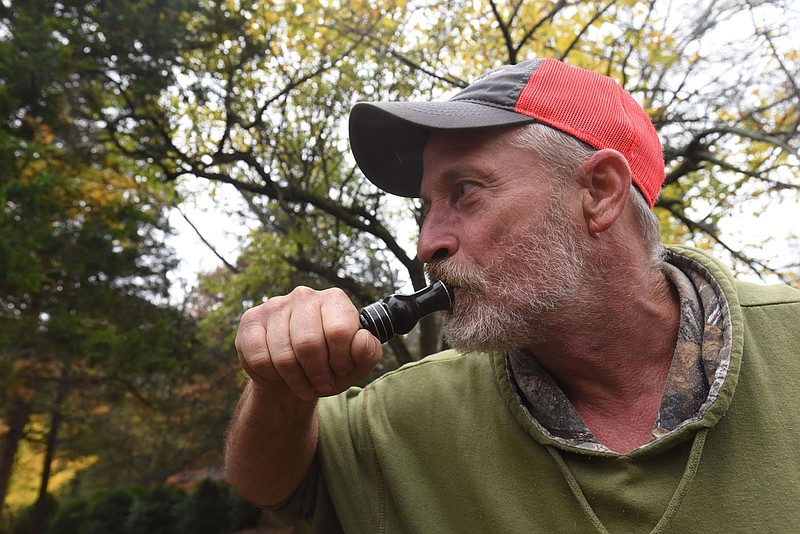First time was a charm for Danny Counts, who turns out presentation quality duck calls that bring waterfowl winging toward the region's sloughs and backwaters.
Five years ago, the duck hunter from Fayetteville turned a block of wood into a call shaped like a duck's head. The call imitated the whistling sound of wood ducks that are plentiful on rivers in Northwest Arkansas where Counts and his buddies hunt.
That first call was like a magnet on ducks, enough to get Counts crafting more calls to bring high-flying mallards and teal circling closer, closer toward the camouflaged hunters.
Counts, 65, still turns out his duck-head-shaped calls, but nowadays he hand crafts calls by the dozen made from all kinds of wood, as well as acrylic. Counts lives in Fayetteville, but goes to his workshop at Compton, near the Buffalo River, to build his duck calls.
"At the shop, I'll make about three calls a day. They're usually custom orders from hunters who know what they want in a call," Counts said.
Walnut, African blackwood and blood wood are three of his favorites to work with.
"The grain is really beautiful with the blood wood," Counts said, opening a box that held about 10 of his hand-made calls.
His wife, Tina, adds the finishing touch to a duck call. Most have a band of metal that circles the call. Tina engraves waterfowl art on the bands. One band may show mallards dropping from the sky on cupped wings. Another band might be ringed with a duck's web-footed foot prints.
"She's my biggest helper," Counts said. "Without her, this wouldn't be possible."
Counts makes loud calls for open water and softer calls for close-in work. A reed, sometimes two, inside the call create the sound. Single-reed calls are typically loudest. Double-reed models are quieter, but more forgiving, Counts said. It's easier to change the pitch with a double-reed call.
Just sounding like a duck isn't good enough. The language of waterfowl has its subtleties.
"A teal's call sounds like a mallard, but more high pitched," Counts said.
Each call is a like an instrument a waterfowler plays, performing the siren song that turns ducks toward a decoy spread. Counts hunts on the White River near Fayetteville, at backwaters along the Arkansas River and makes an occasional trip to eastern Arkansas.
He hunts mostly mallards on the Arkansas River and wood ducks on the White. Bringing down a fast-flying wood duck puts shooting skills to the test.
"They're not as hard to hit as teal. Teal fly fast, and they're smaller," Counts said.
Learning to work a duck call isn't hard, the craftsman confirmed. Hunters don't simply blow into a call. It's more of a grunt that gives it a raspy, duck sound. Watching You Tube videos are good for learning, Counts added.
He's been hunting most of his life.
"I grew up quail and duck hunting with my dad, all over Northwest Arkansas."
Hunters can buy Counts' duck calls at Ozark Sportsman Supply in Tontitown. Prices start at around $80.
More News
Arkansas duck season
Duck season is in three segments. The first segment opened Nov. 21 and ended Monday. The second segment is Dec. 11-23 and the final segment is Dec. 26-Jan. 31.
There’s a special hunt available to active military personnel, veterans and youth on Dec. 5 and Feb. 6.
Check the Arkansas Game and Fish Commission website, agfc.com for complete waterfowl hunting regulations.
Source: Arkansas Game and Fish Commission
Flip Putthoff can be reached at fputthoff@nwadg.com or on Twitter @NWAFlip.
